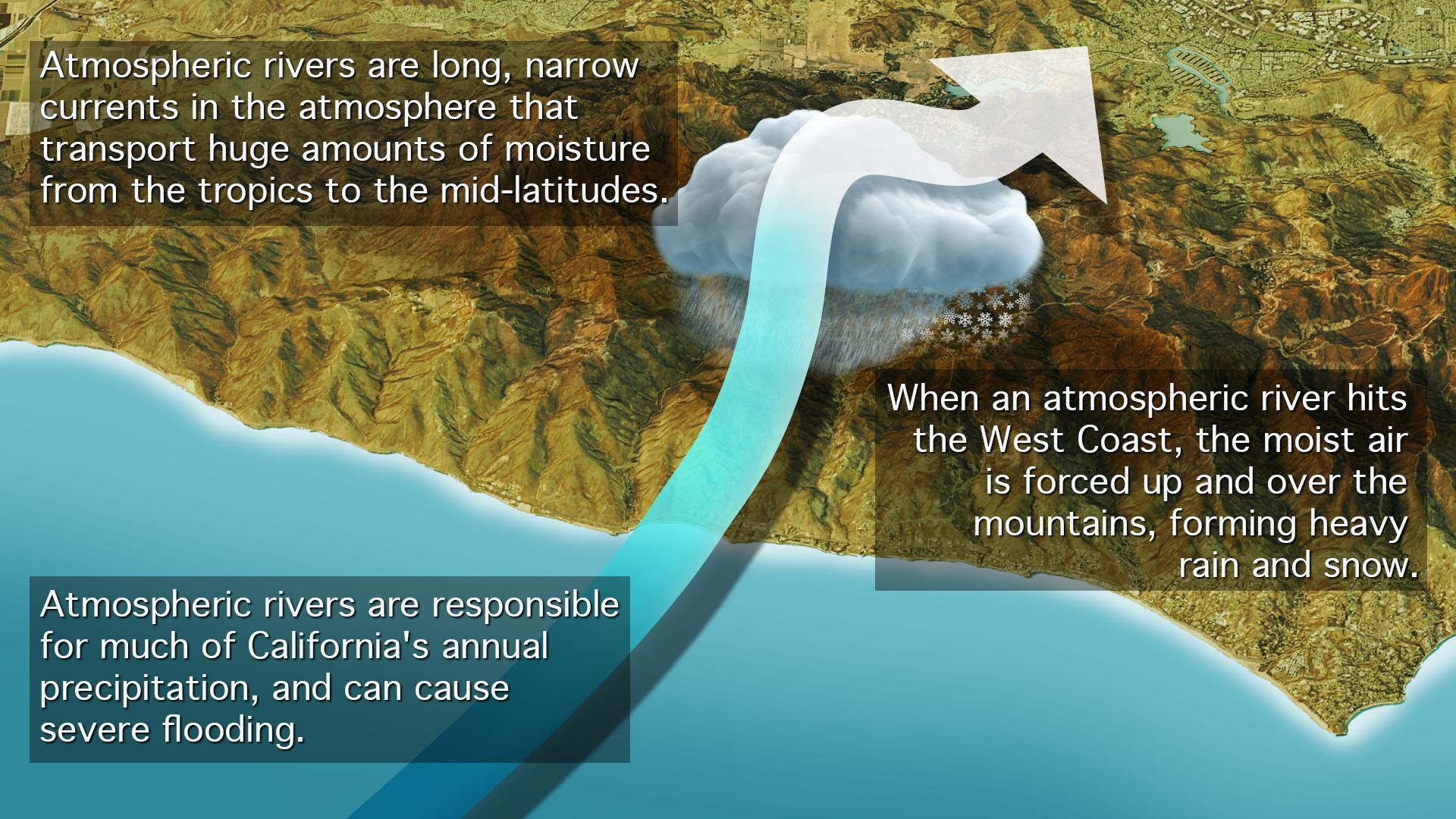An excellent article that is illuminating, horrifying and heartbreaking, and deeply important for us to know and not turn away from. As James Baldwin has wisely stated, "Not everything that is faced can be changed. But nothing can be changed until it is faced." — Molly
 |
| Satellite view of the atmospheric river storm approaching California on Jan. 4. Image: CIRA/RAMMB |
A potent atmospheric river storm associated with a bomb cyclone is producing heavy rains, damaging winds and a significant amount of mountain snowfall in California Wednesday through Thursday.
Why it matters: The latest storm is just one in a series of atmospheric river storms to hit the Golden State, with multiple subsequent disturbances set to spin up across the North Pacific in the coming weeks.
- Depending on how strong they are, there is the potential for significant flooding to occur across central and Northern California.
- The dramatic swing from historically dry to very wet conditions in parts of California is in line with what climate change is expected to bring to the Golden State, studies show.
The latest: California issued a state of emergency Wednesday afternoon "to support response and recovery efforts" to the storm statewide, according to the governor's office.
- "This proclamation will allow the state to respond quickly as the storm develops and support locals in their ongoing response," the governor's office said on Twitter.
Threat level: The National Weather Service has hoisted flash flood watches, high wind warnings, winter storm warnings and other alerts across most of the state as an intensifying bomb cyclone approaches the West Coast.
- A coastal flood advisory is in effect for parts of San Francisco Bay, as well.
- Wrapping around the storm center is a prolific atmospheric river, which could dump as much as 10 inches of rain and 4 feet of snow in some spots.
- Atmospheric rivers are narrow currents of moisture-laden air that can transport vast amounts of water vapor thousands of miles.
- The NWS is warning of landslides, "widespread flooding" in lower elevations and impassable roadways in the mountains as snow falls at rapid rates.
- Power outages are also possible given the high winds, along with extensive flight delays.

- If this comes to pass, it will yield a major case of weather whiplash, as a drought-parched state sees a sudden lurch into major flooding.
- It would also be eerily similar in concept to some worst-case scenario simulations scientists have been simulating.
- According to climate scientist Daniel Swain, if the subsequent storms hit hard, the ultimate price tag of these events could exceed $1 billion.
- "The stage is set for something potentially big to happen," Swain said.
Context: An ongoing simulation of the potential impacts to California from a series of severe atmospheric river events, known as "ARkStorm 2.0," found the cost of a monthlong series of relentless atmospheric river storms would be greater than a strong earthquake striking near one of California's population centers.
- An ARkStorm 2.0 study published this summer found the cost of a monthlong series of relentless atmospheric river storms would be greater than a strong earthquake striking near one of California's population centers.
- The study also showed that climate change has already doubled the risk of such a megaflood occurring today.
- "The odds have sort of increased silently there in the background," Swain said.
- A flood of a magnitude similar to an event that occurred in California in 1862 is more than three times as likely to occur now compared to a century ago, Swain and his colleagues found, due to the effects of human-caused global warming.
Yes, but: Swain cautioned in an online briefing Tuesday that an event of this scale is not expected with the current system and additional storms to follow this month.
Between the lines: Other research shows that as the waters of the North Pacific and the atmosphere warm up, atmospheric rivers are already capable of carrying more moisture than they used to and dumping it on the Western U.S.
- Yet climate change is also increasing the likelihood of sharp swings from very wet to extremely dry conditions in California.
- A 2019 study found that California is likely to see a greater share of its annual precipitation delivered from more intense atmospheric river events, with abrupt shifts from very dry to extremely wet conditions.
The bottom line: The same forces increasing the odds of drought in California are also responsible for upping the possibilities of heavy precipitation, too, namely the increased water-holding capacity of the atmosphere.
Please go here for the original article: https://www.axios.com/2023/01/04/california-atmospheric-river-storm-wind-flooding
No comments:
Post a Comment